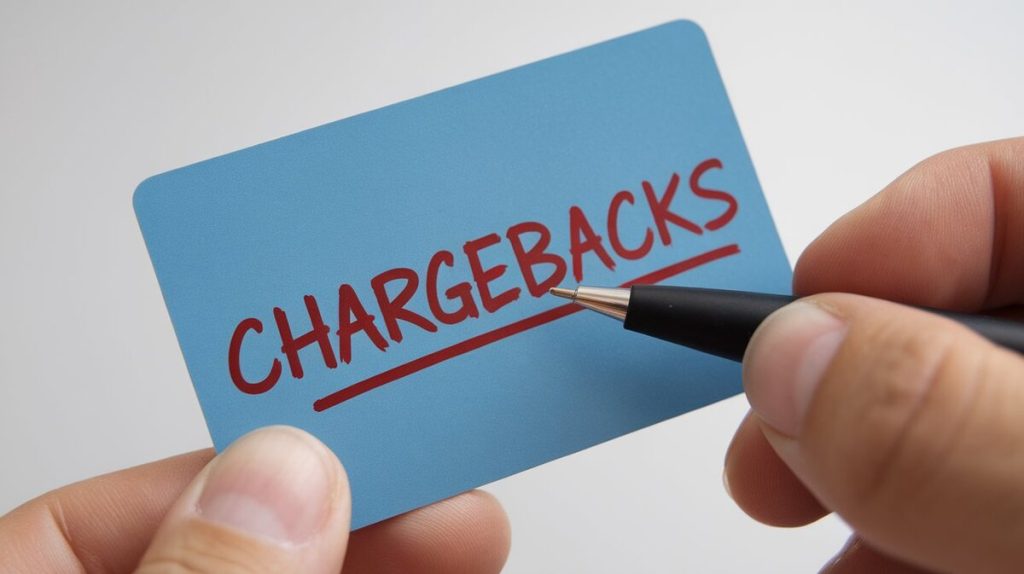Chargebacks can erode profits and strain customer relationships. One simple way to avoid chargebacks is by ensuring your billing descriptors are clear and accurate. This helps customers recognize transactions, reducing disputes. Billing descriptors are the short transaction descriptions that appear on a cardholder’s credit or debit card statement. Using the right type and structure of descriptors can significantly reduce confusion and disputes.
Understanding Billing Descriptors
Billing descriptors are the brief descriptions attached to a transaction on a cardholder’s statement. These descriptors help customers identify purchases and can prevent disputes that lead to chargebacks.
Types of Billing Descriptors
- Soft Descriptors: Temporary placeholders that appear when a transaction is authorized but not yet completed.
- Hard Descriptors: Permanent descriptors that replace soft descriptors once a transaction is finalized.
- Static Descriptors: Descriptors that remain the same for all transactions.
- Dynamic Descriptors: Customizable descriptors that can display specific information about each transaction.
Table 1: Types of Billing Descriptors
| Descriptor Type | Description | Example |
|---|---|---|
| Soft Descriptor | Temporary, replaced upon transaction finalization | STORE123-Pending |
| Hard Descriptor | Final, appears after transaction completion | STORE123.COM |
| Static Descriptor | Same for every transaction | STORE123 |
| Dynamic Descriptor | Custom, displays transaction-specific details | STORE123-Product456 |
Choosing the right descriptor type depends on the business model. For example, dynamic descriptors are effective when businesses offer multiple products or services, providing more detailed information to help customers identify transactions quickly and avoid confusion.

How Clear Descriptors Prevent Chargebacks
Confusion over unclear billing descriptors is a primary reason for chargebacks. According to Visa, nearly 29% of chargebacks stem from customers not recognizing a charge on their statement. A well-structured descriptor can prevent this by ensuring customers easily identify their purchases.
Clear descriptors prevent chargebacks by:
- Improving Recognition: Including recognizable company names and specific transaction details reduces the likelihood of a customer disputing a charge.
- Reducing False Fraud Claims: Unclear descriptors lead to fraud concerns, contributing to 13% of chargebacks according to Mastercard.
To prevent chargebacks, descriptors should include:
- Business Name: Use a recognizable name consistent with your brand.
- Product/Service Details: Provide clear information about the purchased item.
- Customer Service Contact: Include a phone number or website, giving customers an easy way to address concerns before initiating chargebacks.
Optimizing Billing Descriptors: Best Practices
Optimizing billing descriptors is critical to avoiding disputes. Payment processors like Stripe and Braintree recommend keeping descriptors concise and recognizable. Here are the key strategies for optimizing billing descriptors:
- Avoid Abbreviations: Abbreviations can confuse customers. Instead of “XYLTD,” use something like “XY Gadgets” for clarity.
- Use Dynamic Descriptors: These descriptors offer transaction-specific details, making it easier for customers to match the charge to their purchase.
- Include Real-Time Updates: Ensuring that billing descriptors update in real time can prevent disputes, as customers can instantly see what they purchased.
- Localize for International Customers: If you operate in multiple countries, ensure your descriptors are translated appropriately.
- Add Customer Support Info: Adding a contact number or website allows customers to resolve concerns without disputing the charge.
Table 2: Static vs. Dynamic Descriptors
| Feature | Static Descriptors | Dynamic Descriptors |
|---|---|---|
| Customization | Fixed for all transactions | Customizable for each transaction |
| Clarity | Limited information | Detailed product or service information |
| Chargeback Prevention | Less effective | More effective in preventing disputes |
| Example | STORE123 | STORE123-Product456 |
Why Dynamic Descriptors Are Crucial
Dynamic descriptors are particularly effective in preventing chargebacks. By including specific transaction details like the name of the product or service, customers can easily identify the charge, reducing disputes. For example, instead of a generic descriptor like “ONLINESTORE,” a dynamic descriptor could show “ONLINESTORE-PhoneCase,” which makes the transaction more recognizable.
Additionally, partnering with solutions providers like Merchanto.org, which is an official partner of Visa and Mastercard, can streamline the optimization of descriptors. Merchanto.org offers tools that integrate directly into your payment system, helping you manage descriptors effectively. Learn more at this link.

Case Study: Descriptor Optimization Success
A global e-commerce company was struggling with high chargeback rates due to unclear descriptors. By switching to dynamic descriptors, the company saw a 23% reduction in chargebacks over six months. They included specific product information and customer support contact in their descriptors, allowing customers to easily recall their purchases.
Testing and Adjusting Descriptors
It’s crucial to test your billing descriptors across various platforms to ensure they are clear and functional. Different banks display information differently, so testing on multiple platforms ensures consistency.
- Test on Multiple Platforms: Ensure your descriptors are clear on different bank and card statements.
- Collect Feedback: Conduct surveys to gather customer feedback on the clarity of descriptors.
Regularly review and adjust descriptors as needed to keep them accurate and relevant. Visa recommends conducting reviews at least once per quarter to ensure the descriptors reflect your business’s current offerings.
Monitoring Descriptor Effectiveness
Monitoring the effectiveness of your billing descriptors is key to reducing chargebacks. Track chargeback rates, customer inquiries, and feedback to ensure your descriptors are clear and informative.
Table 3: Chargeback Reduction Over Time
| Quarter | Chargeback Rate Before Optimization | Chargeback Rate After Optimization |
|---|---|---|
| Q1 | 2.5% | 1.8% |
| Q2 | 2.3% | 1.5% |
| Q3 | 2.1% | 1.2% |
| Q4 | 1.9% | 1.0% |
Conclusion
Using clear billing descriptors is essential for reducing chargebacks. By following best practices, businesses can improve transaction recognition and minimize disputes. Dynamic descriptors provide the best chance of reducing confusion, as they offer specific transaction details that make it easier for customers to recall their purchases. Implementing these strategies can prevent unnecessary chargebacks and protect revenue.
Key Points:
- Clear descriptors help customers recognize transactions and prevent disputes.
- Dynamic descriptors are more effective than static ones for reducing chargebacks.
- Monitoring and adjusting descriptors is crucial for long-term chargeback reduction.



